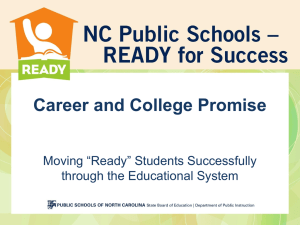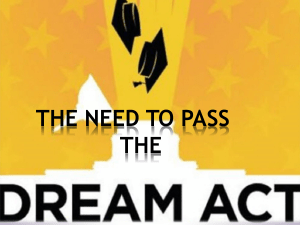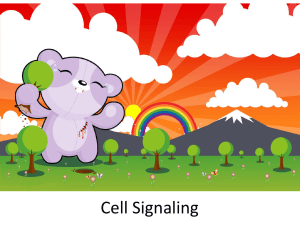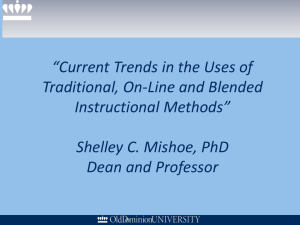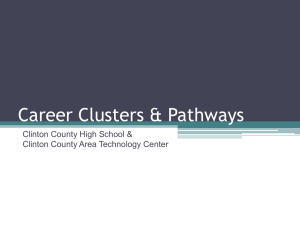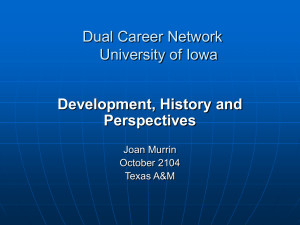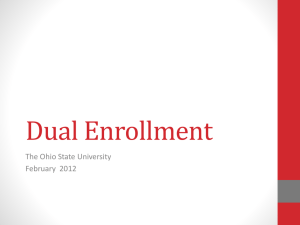Using Career Pathways and Innovative School Models to Improve
advertisement
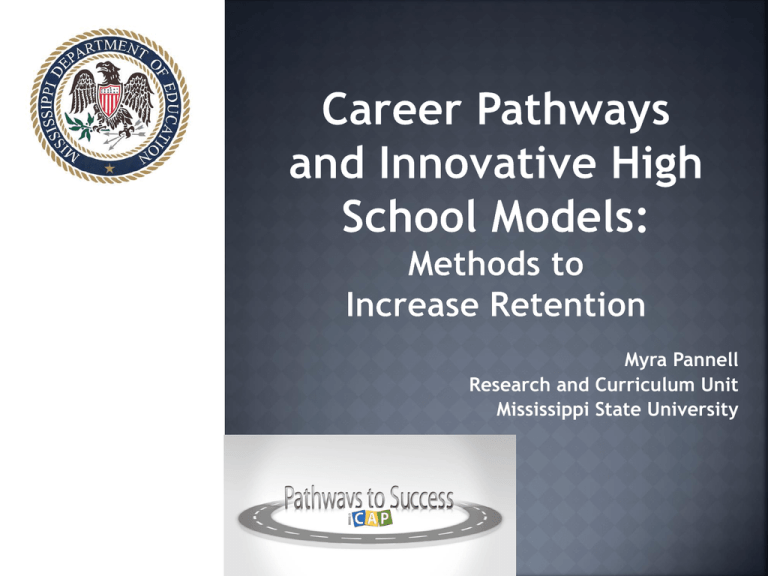
Myra Pannell Research and Curriculum Unit Mississippi State University Assist students in selecting their appropriate graduation pathway Increase attendance rates, high school GPA, and scores on statewide tests in secondary schools Increase enrollment in dual-credit courses Higher rates of postsecondary (PS) enrollment and completion Decrease remediation at the PS level Higher skilled employees in the workforce See this handout on Mississippi Students’ Pathway to Success. Employment: Career Advancement Continuing education and lifelong learning Post-secondary: Career Preparation Achieving credentials: college, certification, military 9–12: Career Preparation Academics and Career and Technical education courses, intensive guidance, individual Career and Academic Plans 8: Individual Career and Academic Plan Choosing a career cluster and career pathway(can change easily at any time) 6–8: Career Exploration Discovering areas of career interests and aptitudes K–5: Career Awareness Introduction to the world of careers Career Clusters are groupings of similar occupations and industries. Mississippi Example: uses the 16 national clusters. Are broad groups of careers that share similar characteristics within a career cluster Example: Early Childhood Education is a career pathway in the Human Services cluster. Prepare today's students for tomorrow’s jobs Connect students with knowledge and skills for success in college and career Motivate students to enroll in more rigorous and relevant courses Guide students from high school into career District-developed, sequential set of courses Includes academic core courses Coherent, challenging and relevant to real-world situations Aligned to common core standards Includes elective courses Logical and challenging Aligned to industry-recognized standards Aligned to College Readiness Standards Leads to multiple exit points Associate’s or bachelor’s degree Certificate at the postsecondary level Industry-recognized credential Aligns to Articulated credit opportunities Dual enrollment opportunities A student’s guide that helps him or her establish and achieve career and academic goals for success after high school Provides mentoring and guidance to assist students in career pathway planning Helps identify correct graduation pathway options Supports changes to meet student needs and ambitions Transitions into a profession or postsecondary educational major Students will be introduced to career options in the 6th-7th grades. Spring pre-registration All 8th grade public school students in Mississippi Should select a program of study (major). Develop an iCAP based on this major with input from counselors, mentor teachers, and parents. In the following years, iCAP will be developed for all incoming 8th graders. Students will revise iCAP each year in grades 9-12. Multiple pathway options to a standard diploma Career Pathway Option (21 Credits LAW) (MS Code 37-16-17) Or Traditional Pathway Option (24 Credits minimum) Or District Pathway Option (21 Credits minimum) Or MS Early Exit Exam Option Applies only to students in a State Board of Education (SBE) approved Innovative Program (17.5 Credits minimum) See Handout on Graduation Pathways Innovative High School Models Traditional high school route Excellence for All Career Academies Dual Credit/Dual Enrollment Early College High School (ECHS) MS Works Open to all high school students May include a cohort of students May include all students at school Students may exit after successful completion of lower division OR Students may continue the high school experience in the upper division Locations Corinth (Cambridge) Clarksdale (Cambridge) Lamar County (ACT) Columbia (ACT) Gulfport (ACT Innovations) Open to all high school students May be a cohort of students (pocket academies) May include all students (wall-to-wall academies) Students exit the Career Academy in the typical four years required for high school Locations Rankin County Meridian Gulfport Madison County Lamar County Clinton Lincoln County George County Hattiesburg Open to all high school students who meet entrance criteria established by college Dual credit/dual enrollment does not impact exit time unless combined with another option Locations Many schools offer opportunities for dual credit/dual enrollment 2012-2013, 42 MS school districts awarded dual credit At-risk students or recent dropouts Students must be between ages 16 and 21 Students exit the MS Works program at the point they earn their high school diploma or at age 21 All community colleges must implement MS Works Task Force recommendations ready by Fall 2013 Locations Hinds CC/Rankin-Pearl Copiah-Lincoln CC/Lincoln County Open to all students in school Targets at-risk or first-generation college students Implementation involves a cohort group meeting specified criteria A new small high school usually located on a college campus Students enter in 9th grade after selection based on specified criteria and application Last two years are almost all dual-credit college courses High school and college provide extensive student support services for success in college courses Support available through the Early College High School Initiative Students enter the ECHS in 9th grade; programs are designed to complete high school and AA/AAS degree in four to five years Locations In planning stage For information concerning Pathways to Success or MS Innovative High School Models, please contact: Myra Pannell Research and Curriculum Unit Mississippi State University myra.pannell@rcu.msstate.edu 662.325.3305
